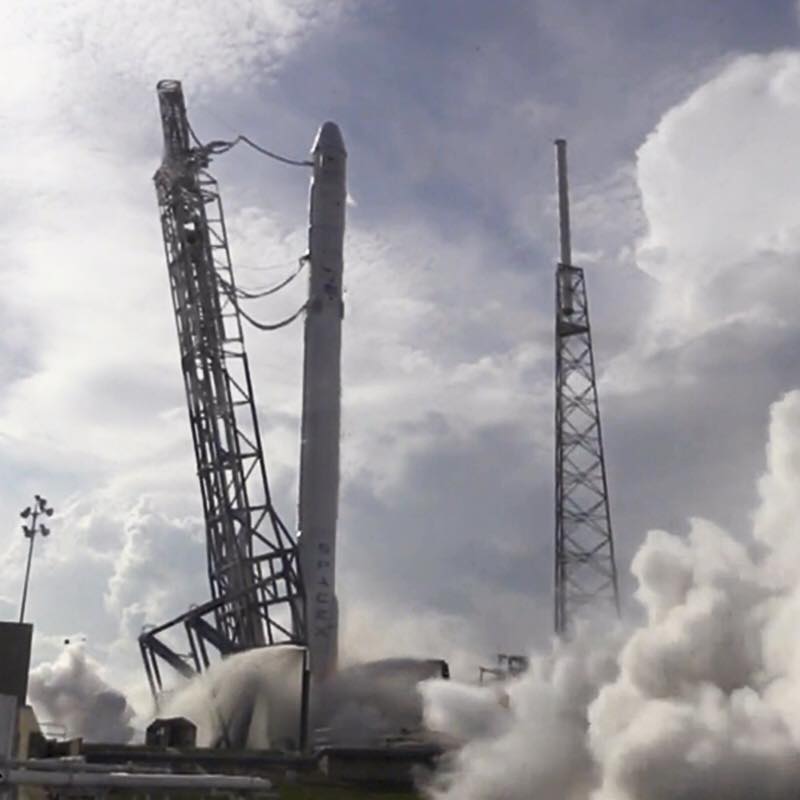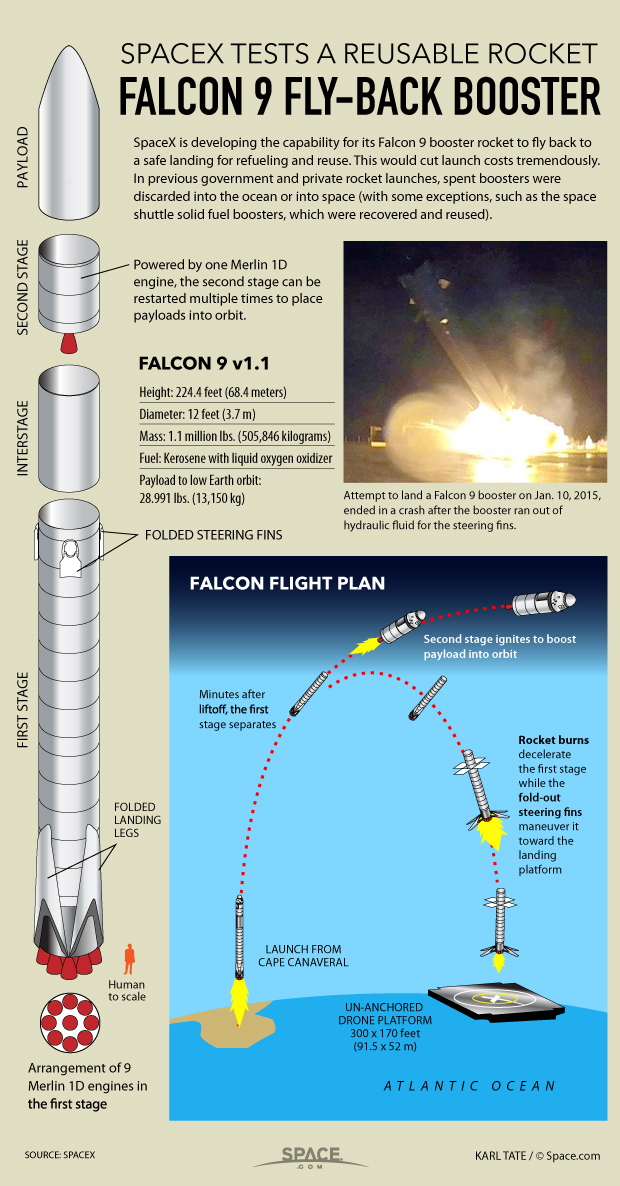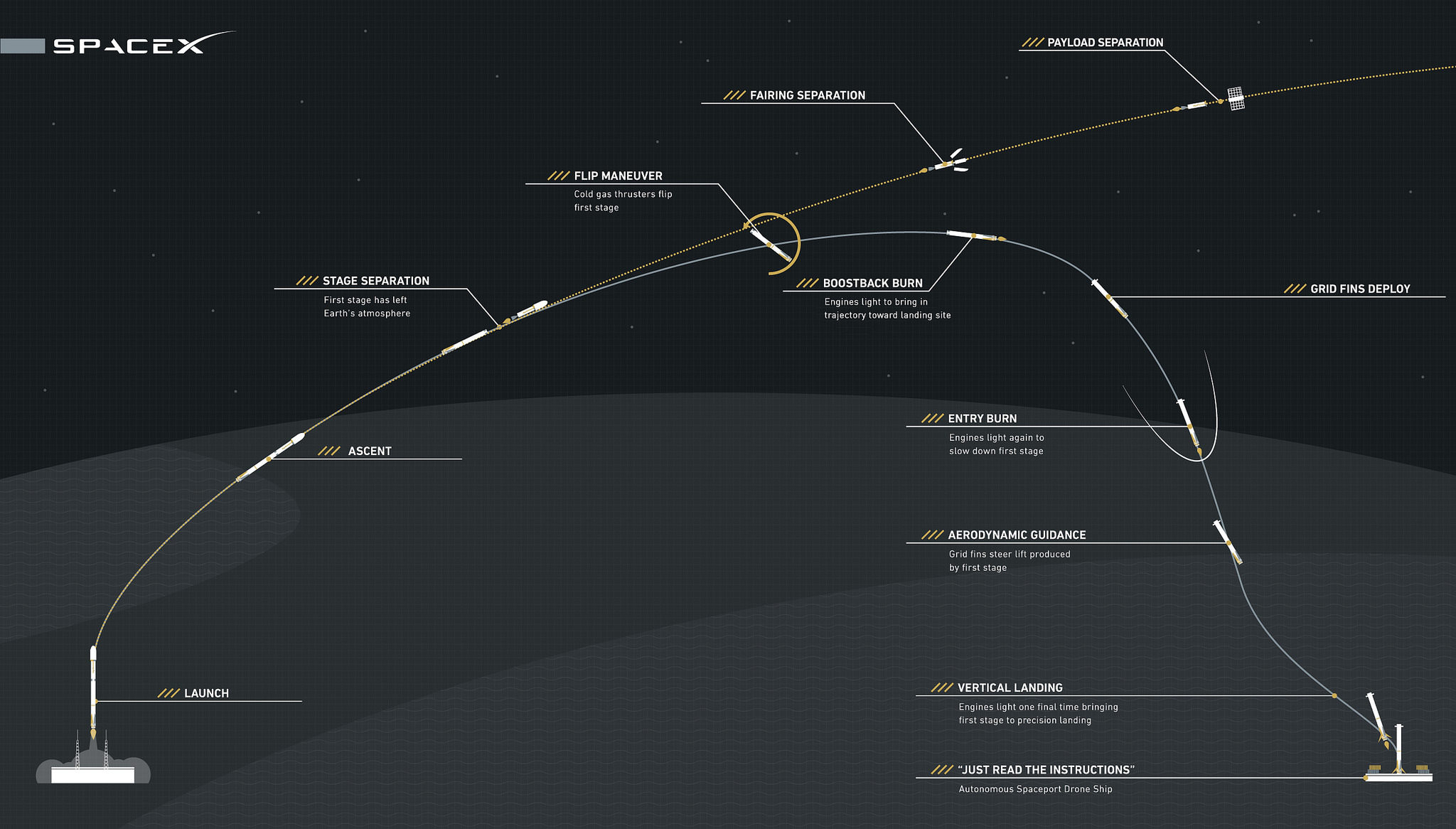
Spaceflight fans are in for a treat today.
SpaceX aims to launch its robotic Dragon cargo capsule toward the International Space Station from Florida's Cape Canaveral Air Force Station today (April 13) at 4:33 p.m. EDT (2033 GMT), then bring the first stage of its Falcon 9 rocket back for a vertical touchdown on an unmanned ship in the Atlantic Ocean. You can watch the launch live at Space.com courtesy of NASA TV, beginning at 3:30 p.m. EDT (1930 GMT).
As of Sunday (April 12), Air Force forecasters were predicting a 60 percent chance of good weather for the launch, which will kick off the sixth of 12 missions SpaceX is flying to the space station under a $1.6 billion resupply contract with NASA. [SpaceX's Reusable Rocket Landing and Dragon Flight in Photos]

Dragon is packed with 4,387 lbs. (2,015 kilograms) of food, scientific experiments and other supplies for this trip, including a technology demonstration called ISSpresso, which should allow astronauts to make coffee, tea and other hot drinks aboard the orbiting lab.
If all goes according to plan, Dragon will arrive at the space station early Wednesday morning (April 15), then zip around Earth with the $100 billion orbiting complex for about five weeks before returning to Earth with a load of "down cargo," NASA officials have said.

But more eyes around the world may well be on the Falcon 9's first stage than on Dragon during Monday's launch. SpaceX will try to land the stage softly on the company's "autonomous spaceport drone ship" in a reusable-rocket test. Fully and rapidly reusable rockets could slash the cost of spaceflight and help open up the heavens to exploration, SpaceX founder and CEO Elon Musk has said.
SpaceX has tried the daring rocket landing once before — during the last Dragon cargo launch, which occurred on Jan. 10 — and almost pulled it off: The rocket stage came down on target but hit too hard, exploding on the ship's deck.
Breaking space news, the latest updates on rocket launches, skywatching events and more!
The Falcon 9 stage's stabilizing "grid fins" ran out hydraulic fluid during that attempt, SpaceX representatives have said. They've taken measures to make sure that won't happen again, and have also upgraded the drone ship to be able to tolerate higher winds and ocean swells.
The various improvements, as well the experience gained during the Jan. 10 attempt, have SpaceX optimistic about a successful landing.
"I would up my probability to 75 percent at this point in time, maybe 80," Hans Koenigsmann, SpaceX vice president of mission assurance, said during a prelaunch press briefing Sunday.

SpaceX had hoped to try the first-stage landing during February's launch of the DSCOVR (Deep Space Climate Observatory) space-weather satellite but was thwarted by rough seas, which kept the drone ship away. Still, the company brought the rocket stage down for a soft, vertical landing on the ocean's surface.
"I believe that, if the drone ship would have been there, it would have been a good landing," Koenigsmann said.
Follow Mike Wall on Twitter @michaeldwall and Google+. Follow us @Spacedotcom, Facebook or Google+. Originally published on Space.com.
Join our Space Forums to keep talking space on the latest missions, night sky and more! And if you have a news tip, correction or comment, let us know at: community@space.com.

Michael Wall is a Senior Space Writer with Space.com and joined the team in 2010. He primarily covers exoplanets, spaceflight and military space, but has been known to dabble in the space art beat. His book about the search for alien life, "Out There," was published on Nov. 13, 2018. Before becoming a science writer, Michael worked as a herpetologist and wildlife biologist. He has a Ph.D. in evolutionary biology from the University of Sydney, Australia, a bachelor's degree from the University of Arizona, and a graduate certificate in science writing from the University of California, Santa Cruz. To find out what his latest project is, you can follow Michael on Twitter.
